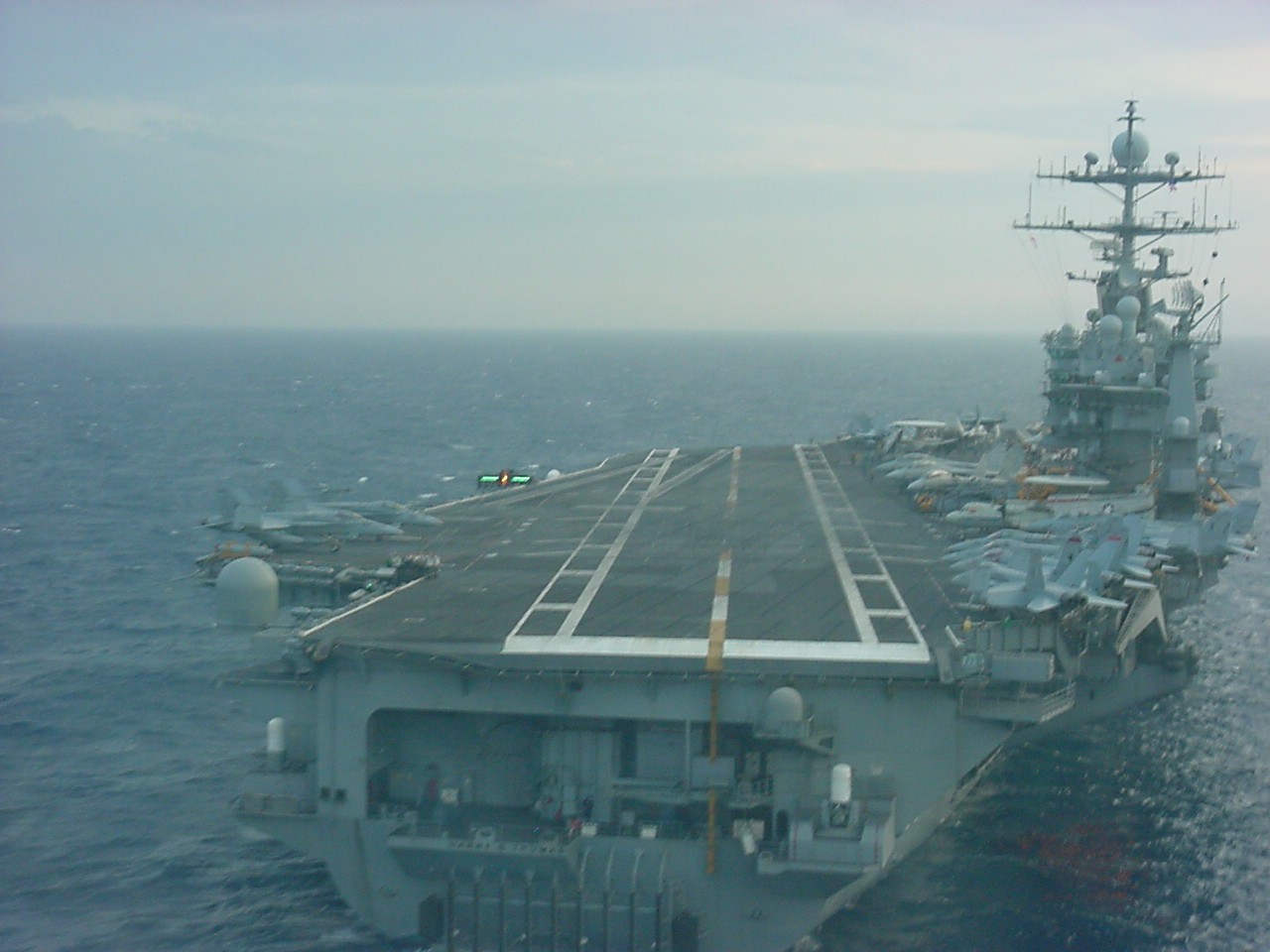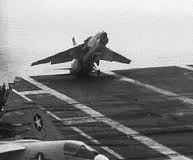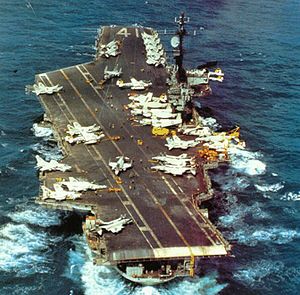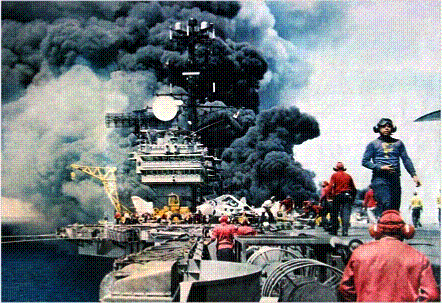Mar.02.2011
by Ed Beakley
IV. Bad Night for Schoolboy – And Other Stories of the Carrier
An Intersection
flight operations at sea is the closest to the “edge of the envelope”–operating under the most extreme conditions in the least stable environment, and with the greatest tension between preserving safety and reliability and attaining maximum operational efficiency. Rochlin, Laporte, Roberts
__________________________________________________________________________
USS Midway (CV-41) ”Schoolboy” on Yankee Station 1972
On the night of 24 October, 1972 an A-6 Intruder returning from a combat mission over North Vietnam at close to maximum carrier landing – or “trap” – weight with two 500 pound bombs hung on its right outboard weapons station, landed successfully only to have the right axel shear off on contact with the flight deck. The aircraft tailhook disengaged from the arresting gear wire and the A-6 slid up the flight deck into previously parked aircraft. Sensing the near impact, the Bombadier Navigator ejected and was lost at sea. USS Midway – call sign Schoolboy -was on the verge of being the third carrier in the Vietnam war to have a major fire.
First was the 26 October 1966 fire on USS Oriskany (CV 34) killing 44 men, many who were veteran combat pilots who had flown raids over Vietnam a few hours earlier. Second, (picture below) was series of chain-reaction explosions and devastating fire on 29 July 1967 that killed 134 sailors and injured 161 on the USS Forrestal (CV-59), after an unusual electrical anomaly discharged a Zuni rocket on the flight deck. Damage exceeded $72 million (not including damage to aircraft).
On Midway, the crash and rescue crew seeing the aircraft lose its wheel and begin skidding, immediately pulled out of their position behind the carrier’s super structure – the “island” – and began chasing the moving Intruder down the flight deck and began spraying it with fire retardent foam while the aircraft was still in motion. Their quick response quenched the fire in 90 seconds, therefore preventing ignition of fuel and ordance from multiple impacted aircraft. Five lives were lost, along with several aircraft. The AirWing Commander, struck by the A-6 wheel, almost lost his leg and was in critical condition but lived. Schoolboy launched combat sorties the next day against North Vietnam.
For 2011 within the context of telling stories of 100 years of Naval Aviation, the stories of the carrier are being used as a context for exploring organizations that “routinely” survive and indeed prosper in potentially lethal environments. As part of the overall discussion of decision making in severe crisis,the intent is to examine one approach to the field of crisis and catastrophe management refered to as High Reliability Organizing.
In 1985, to better learn how to create a safe and reliable working environment, Thomas A. Mercer, Captain of the USS Carl Vinson, brought in Karlene Roberts, PhD, a professor from the Haas School of Business, University of California, Berkeley. Capt. Mercer and Dr. Roberts focused on the rare event as an audit for success, given that the rare, unexpected event is the one that can destroy people, planes, and ships. An approach then resulted out of codification of the observance and analysis of performance of the air operations on the carrier which was then used to evaluate impending bank failures. This crossover speaks to the utility of using human performance and social interactions for the unexpected problems found in uncertain environments.
Using our adoption of the Medici Effect, an “Intersection” apppears to have been defined that 1) relates decision making and performance in crisis and disaster to; 2) aircraft carrier operations and to; 3) high reliability organizations. This post within INTERSECTIONS is intended to provide complementary information and discussion to the boundary condition threads on the main web site and blog. (See Stall, Spin, Crash, Burn, and Die: Boundary Conditions for 2011 for basic backround on boundary conditions for 2011 discusions and Naval Aviation 100 Years – Part 1: A Bad Night for Schoolboy – A self-designing, High Reliability Organization for the first carrier operations discussion post).
In that regard in the sub pages below, the stories of Airwing Five personnel on that October 1972 night are provided for reference, to be followed by other “stories of the carrier” as a high reliability organization with lessons worth reviewing for high end crisis response.
This page has the following sub pages.




